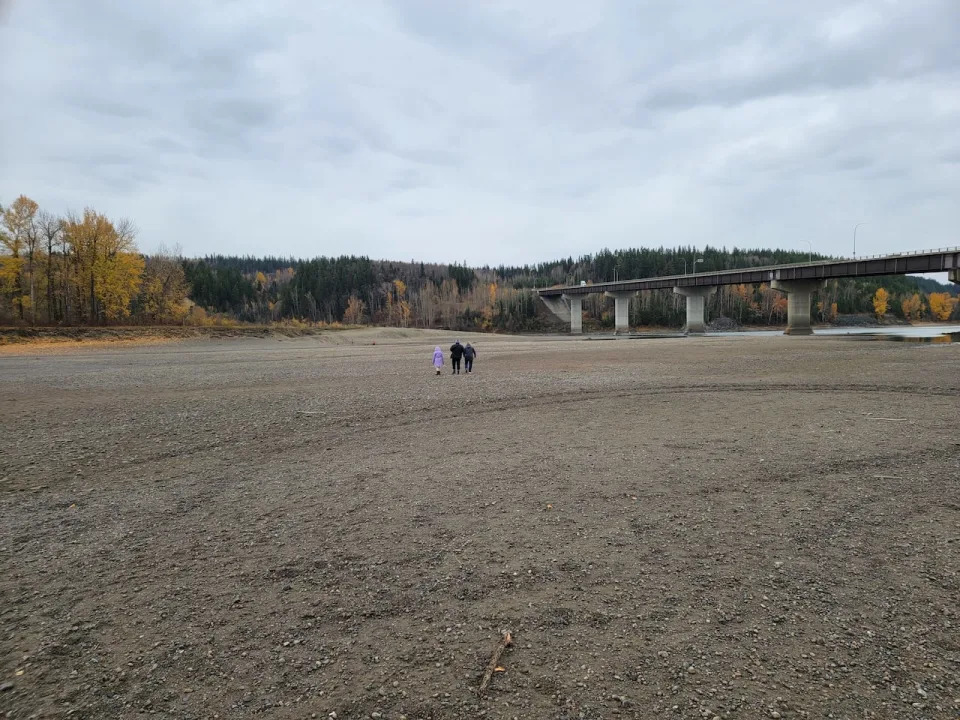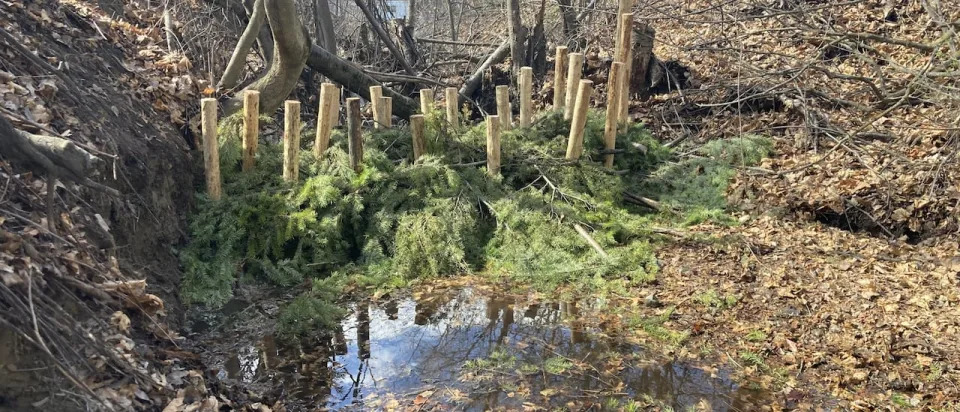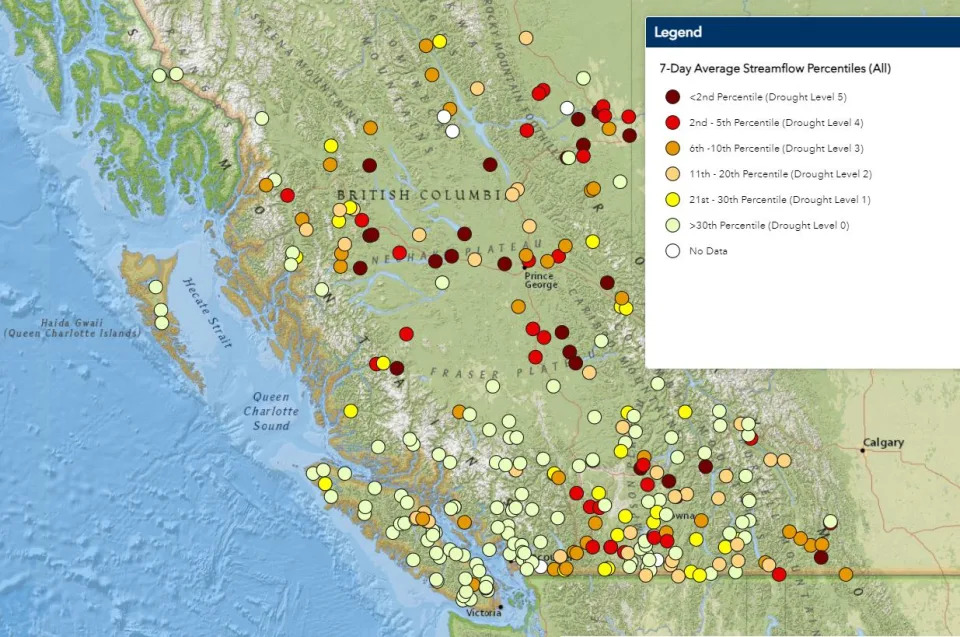Aging population contributing to labour shortages
Jennifer Ferreira
CTVNews.ca Producer
Published Dec. 14, 2023

As more Canadians leave the workforce over the next few decades, experts say this will likely exacerbate existing labour shortages. In this stock image, a senior couple appears stressed while looking at bills.
There will likely be more Canadians leaving the workforce than entering it over the next few decades as the country’s senior population grows, according to new data from Statistics Canada. Experts say this will not only exacerbate existing labour shortages, but could result in higher wages for employees.
As of November 2023, there were approximately 2.7 million Canadians aged 15 to 24 who said they were employed, compared to more than 4.4 million people aged 55 and older(opens in a new tab) who had a job. This is based on data from Statistics Canada’s latest labour force survey, which also shows a wide difference in the total population of Canadians 15 to 24 years of age compared to those aged 55 and older, with 4.7 million and 12.4 million people, respectively.
“This means that there are potentially more people prepared to leave the labour force because of retirement than there are entrants to replace these workers,” reads a note prepared by Jane Badets, senior adviser at Environics Analytics, a marketing and analytical services company owned by Bell Canada.
The information you need to know, sent directly to you: Download the CTV News App
This comes amid new statistics from Environics Analytics that show Canada’s senior population is projected to surpass 11 million by 2043. The data, based on a special analysis for CTV News, paints the senior population as the fastest-growing age group in the country.
LABOUR SHORTAGE LINKED TO AN AGING POPULATION: EXPERTS
Canada is already facing labour shortages(opens in a new tab) across several sectors, largely due to the country’s aging population, said Stephen Tapp, chief economist for the Canadian Chamber of Commerce. Over the next few years, more Canadians born between 1946 and 1964 – also known as the baby boomer generation – will be entering their senior years and likely retiring. Without a boost in the number of young Canadians entering the workforce, existing labour gaps will only become larger, Tapp said.
“(We’re) in a more labour-scarce world,” Tapp told CTVNews.ca in a telephone interview. “Things are getting tighter and more difficult … It will get worse over the next 10 to 15 years.”
Businesses of all sizes and across every industry have complained of labour shortages for months(opens in a new tab), with experts saying Canada’s aging workforce is among the factors to blame. These shortages could lead to a reduction in labour input as well as economic growth, a recent study shows.
Conducted by the RAND Corporation, a research organization based in the United States, the study published in 2016 and revised in 2022(opens in a new tab) shows a link between an aging workforce and national economic performance. Looking at U.S. data, researchers discovered that with each 10 per cent increase in the fraction of the population aged 60 and older, per-capita GDP decreased by 5.5 per cent.
“Our estimate implies population aging reduced the growth rate in GDP per capita by 0.3 percentage points per year during 1980 (to) 2010,” the paper reads. Aging in Canada: What a growing senior population means for you(opens in a new tab)
A study published in August by the Fraser Institute(opens in a new tab), a conservative think tank, came to a similar conclusion. Researchers determined that every 10 per cent increase in the senior population is linked to a slight decrease in the real GDP per capita growth rate.
“This result implies that, in 2021 dollars, Canada’s GDP per capita will be lower by $4,300 (per person) by 2043 under Statistics Canada’s slow-aging population projection scenario and by $11,200 under its fast-aging scenario,” reads a press release issued earlier this year(opens in a new tab).
A report published by the federal government in 2018(opens in a new tab) already indicated that Canada was seeing “proportionally fewer young people moving into the workforce to replace the increasing number of older individuals retiring.”
Adding to this is what is expected to be an increase in the number of Canadians who are retiring year-over-year. An analysis of labour force survey data by the left-leaning Canadian Centre for Policy Alternatives (CCPA) revealed 73,000 more people retired in the year ending August 2022(opens in a new tab) compared to the year prior.
HEALTH CARE, CONSTRUCTION WILL NEED MORE WORKERS
Some sectors can expect to see greater labour shortages than others, Tapp said. Amid a lack of nurses and physicians, Canada’s health-care sector is likely to continue facing labour shortages as demand for services increases with an aging population, said Ted McDonald, a political science professor at the University of New Brunswick.
“Those labour shortages have direct implications for patient outcomes as well as the broader economy,” McDonald told CTVNews.ca in a telephone interview.
Health care is among the industry sectors that are currently seeing some of the highest job vacancy rates, according to the most recently available data from Statistics Canada(opens in a new tab).
Across all industries, the job vacancy rate was 3.9 per cent as of September, but within the health-care and social assistance sector, that rate was 5.6 per cent. Other sectors with job vacancy rates above the four-per-cent mark include construction, and accommodation and food services, at 4.7 and 6.2 per cent, respectively.
Sectors such as transportation are also likely to experience tighter labour market conditions in the years to come, as they have a higher number of older workers, according to a research note produced by Environics Analytics.
The ratio of older to younger workers varies by occupation, according to the latest census data from 2021. Younger workers include employees aged 25 to 34, whereas older workers includes those aged 55 and above. Examples of some of the occupations that have more older than younger workers include bus drivers and other transit operators. In these occupations, the number of older employees is more than four times higher than the number of younger employees.
Alternatively, the employment rate among 25- to 54-year-olds born in Canada from 2010 to 2021 has seen a two-per-cent increase, according to data from Statistics Canada(opens in a new tab).
As more of Canada’s older employees exit the workforce, transferring their knowledge to younger workers can become a challenge, Tapp said. As a result, providing adequate training will be key, he said. This not only includes properly training new hires, but also offering technical training to older employees who may choose to continue working beyond the age of 65. Some of these workers may need to be trained on how to use new tools or technology to perform old tasks, he said.
“If we have older people staying in the labour force longer, they're going to need to stay up on their on their skillsets and to be retrained more frequently than they would have been before,” he said.
WAGES WILL SEE AN INCREASE: EXPERT
Although the road ahead may present challenges for employers facing an increasingly tight market, conditions may be beneficial for workers, said Tapp.
With more Canadians expected to leave the workforce than enter it, workplaces may struggle with obtaining and retaining employees. As an incentive when hiring, they may be more likely to offer increased wage rates to fill gaps within their labour force, he said.
“In any kind of market where there’s fewer workers … the market is going to have to pay them more and their wages are going to be increased to entice them to come in,” he said. “It’s good news if you’re looking from a household perspective … The balance of power has really shifted.”
Tapp said he expects to see wages increase more than two per cent each year to account for annual inflation.
Another trend McDonald expects to see emerge is a continued boom in the use of artificial intelligence technology. Struggles to secure labour will likely prompt more businesses to explore ways to automate processes, he said, which may allow them to hire fewer people.
“You look at alternative ways to continue to operate,” McDonald said.
SOME DELAY RETIREMENT TO KEEP WORKING
While Canada’s workforce may be aging, some employees are continuing to work for longer, data shows. In 2022, nearly one million Canadians were working at the age of 65 or older, making up five per cent of the total labour force in Canada that year, Statistics Canada data shows(opens in a new tab).
Additionally, the average retirement age in Canada has been steadily increasing over the last two decades. In 2022, the average retirement age was 64.6 years(opens in a new tab). This is approximately four years older than the average age reported in 1998, which was 60.9.
“I had hoped to pay off some debt and retire this year but that didn't happen and I am actually further in debt,” she wrote in an email to CTVNews.ca. “I may not ever retire.”
Instead, Newson said she plans to work for as long as her health permits. In response to the rising cost of daily expenses, Newson said she has begun to scale back spending on birthdays and holidays, as well as eating at restaurants and visiting movie theatres.
“It is becoming more frightening thinking about how I will support myself when and if I retire,” she wrote. “I am a renter and rent goes up every year, pensions do not.”
Newson said she only expects her pension to be able to cover her monthly rent payments, leaving her with no choice but to continue working to cover other expenses such as food.
Stewart Turnbull said he finds himself in a similar position. The 56-year-old living in Victoria, B.C., owns a single-family home and works full-time as a customer service manager. Upon retiring, he planned to sell his home and purchase a smaller property farther from the downtown core, he said.
However, when his three-year mortgage agreement went up for renewal in March, the rise in interest rates increased his payments by about $900 per month, he said.
Turnbull and his partner recently put their home up for sale, but they are unsure of whether they will receive enough money to purchase a new home and comfortably retire at 65. Without much money accumulated in savings, Turnbull said he is not convinced his pension will be enough to cover daily expenses if he stopped working.
“We are trying to leverage whatever equity we have in this house into sort of a rescue mission after interest rates totally annihilated any extra money we had on a monthly basis,” he told CTVNews.ca in a telephone interview. “I hoped it would be worth enough that we could possibly retire but I’m not 100 per cent sure that that’s going to happen.”

Instead, Turnbull is not planning for retirement and anticipates he will have to continue working beyond the age of 65 to continue to afford his daily expenses. He has also made some lifestyle changes over recent months in order to adjust to the elevated cost of living. This includes hanging his clothes to dry in order to lower his electricity bill, and downgrading his cell phone bill so monthly fees are less expensive, he said.
“It has become clear to me that retirement is no longer an option,” he wrote in an email to CTVNews.ca.
National labour force survey results(opens in a new tab) released in August show that many Canadian workers would delay their retirement if given the option to work fewer hours without affecting their pension. Additionally, employees aged 65 and older have been making up a larger proportion of the total working population in Canada over the last few years, data shows.
In 2010, employed seniors made up three per cent of the total workforce, according to Statistics Canada. Fast forward to 2022, and working seniors accounted for five per cent of all Canadians employed that year.
But according to Tapp, this could be due to the growing number of seniors in Canada as opposed to a shift in retirement patterns.
WHAT ROLE DOES IMMIGRATION PLAY?
In order to fill existing gaps within the country’s workforce throughout the years, the federal government appears to be relying on immigration, McDonald said.
Over the last decade, the share of new and recent immigrant workers grew the most quickly in accommodation and food services, as well as transportation and warehousing, according to 2021 Statistics Canada census data(opens in a new tab). Other sectors that saw relatively high levels of immigrant workers include manufacturing and health services.
Many of Canada’s new immigrants are skilled workers(opens in a new tab) who apply for permanent residency through the Express Entry program. Using a comprehensive ranking system, points are awarded to applicants based on their age, language proficiency, level of education and work experience, and those with the highest scores are admitted. In an effort to address labour market shortages(opens in a new tab), it was recently announced that the program would prioritize skills and work experience(opens in a new tab) in fields such as health care, STEM (science, technology, engineering and mathematics), trades, transport and agriculture.
In a recent announcement, Canada’s immigration minister also shared federal government plans(opens in a new tab) to increase permanent resident targets to 485,000 in 2024 and 500,000 in 2025 before holding this number steady at half a million permanent residents in 2026.
But how much these policies will help strengthen the country’s workforce remains to be seen, McDonald said.
CTV News is a division of Bell Media, which is part of BCE Inc.
Edited by Mary Nersessian, graphics produced by Jesse Tahirali


.jpg)






